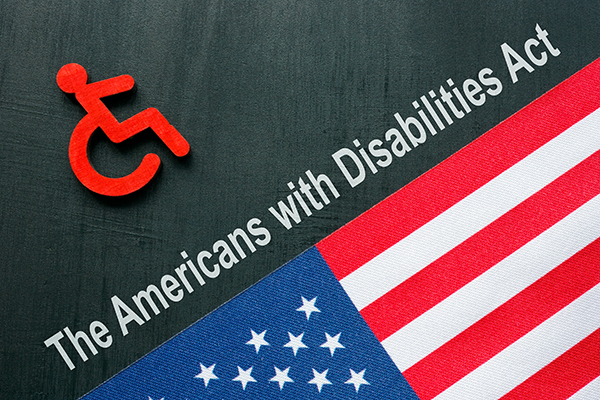What Is the Americans with Disabilities Act (ADA)?

The Americans with Disabilities Act of 1990 (ADA) is a civil rights law that prohibits workplace discrimination (including harassment) against individuals with disabilities, personal relationships, or associations with individuals with disabilities and persons "regarded as" having a disability. Supervisors should report any and all knowledge of potential workplace discrimination or harassment on the basis of a disability to the Office of Equity, Civil Rights, and Title IX.
Title I of the Americans with Disabilities Act of 1990 (ADA) requires employers to provide reasonable accommodations to qualified applicants and employees with a disability unless the employer can demonstrate that doing so creates an undue hardship to the employer or poses a direct threat to the safety of the employee or others in the workplace. An accommodation may include a change to the work environment or to the way in which a job is usually performed. Baylor is not required to make an accommodation that alters the essential functions or core responsibilities of an employee's job. Baylor University's ADA policy adheres to these provisions and applies to any job applicant and faculty, staff, and student employee.
ADA Process Overview
Employees who wish to request an ADA accommodation should communicate their need to their supervisor and HR Consultant for assistance. Steps for seeking an ADA accommodation include:
- Employee reads BU-PP 415 Americans with Disabilities Act (ADA) Policy
- Employee completes and submits the Accommodation Request Form to HR. The employee's Health Care Provider completes the Medical Certification Form and returns the completed form directly to Human Resources.
- Upon receipt of the completed documents, HR will review the request and schedule a meeting with the employee to further discuss their needs.
- HR, the employee, and their supervisor will engage in the interactive process. This process encourages interactive dialogue with a good-faith effort by the employer and the employee to discuss the limitations or performance issues the employee's disability may pose. The purpose of this discussion is to determine what (if any) accommodations may be needed.
- At the conclusion of the interactive process, the University will determine if a reasonable accommodation will be granted or denied. An Employer Response will be provided to both the employee and department communicating the accommodation request decision in writing.
Recognizing an Employee's Potential Need for an Accommodation
Recognizing an accommodation request is an important first step in the interactive accommodation process. A request for accommodation doesn't always come in the form of a letter that specifies an individual's disability and need for accommodation. Sometimes the need for accommodation is alluded to during ordinary workplace conversations or is understood because an employee shares a note from a healthcare provider that excuses absences for a medical reason or places restrictions on an individual's ability to perform certain job tasks. In many situations, there is no clear sign, no flashing light, indicating that the ADA is triggered. This is why it's important for supervisors to be trained to recognize the flags. When an individual makes it known that an adjustment or change is needed at work, due to a medical reason, this may be an indirect request for accommodation under the ADA.
Do you think your employee needs an accommodation? Instead of asking if an accommodation is needed or whether an individual has a disability that is affecting job performance, there is a better way: simply ask, "How can I help?" Generally speaking, supervisors are encouraged to create a safe space for their employees to communicate any and all perceived needs that will enable the employee to successfully perform their job duties and meet performance standards. This question doesn't make employers vulnerable to appearing as if they are making assumptions about disability or the possible need for accommodation. Rather, asking "How can I help?" is a smart practice for conveying support and the desire to be part of a solution to resolve a challenging situation. In the event the supervisor is unable to discern an appropriate response to the employee's answer, the employee should be referred to HR for further assistance.
Supervisor's Role in the ADA Process
The supervisor plays a critical role in the ADA request and interactive process. Throughout the ADA process it is critical that the supervisor refrain from engaging in disability discrimination or retaliation and from asking the employee for any medical details.
Key responsibilities of the supervisor's partnership with HR during the ADA process include:
- Refer employees to HR when they disclose information pertaining to the potential need for a medical accommodation.
- Partner with HR to review the essential and secondary functions of the job and the reasonableness of the accommodation request in consideration of business needs.
- Suggest alternative accommodations that will simultaneously fulfill the business needs of the department and the medical needs of the employee.
- Ensure the approved accommodations are implemented in an effective and timely manner.
- Notify HR if the circumstances change relative to any approved accommodation, which will initiate a new interactive process.
